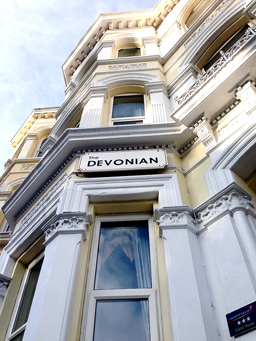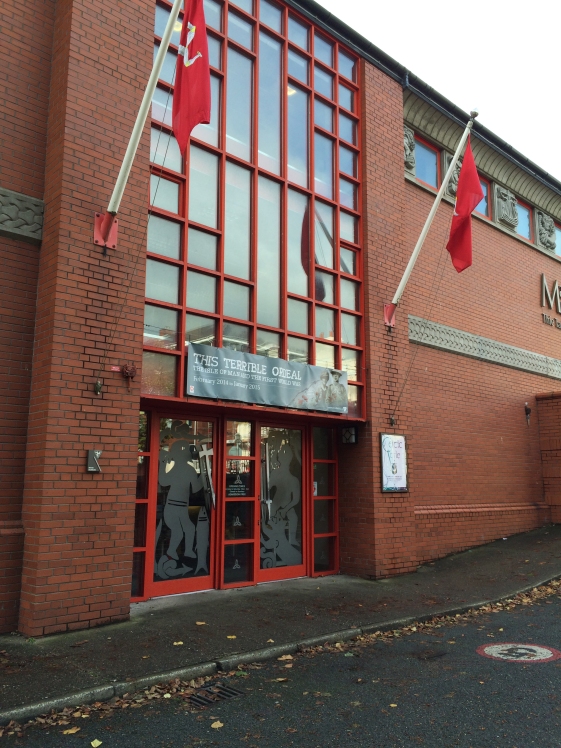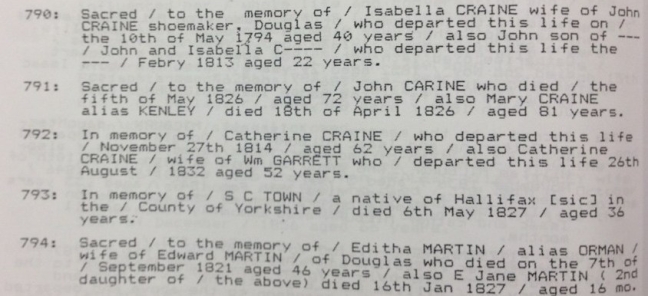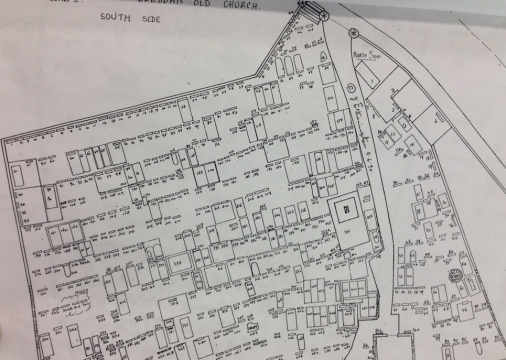I’ve not written much about my husband’s ancestors. I can barely keep up with my own side of the family. However, it was his Manx great-great grandparents, William John Garrett and Isabella Kissack, that kick-started my serious deep dive into family history.
I’ve written about our journey to the Isle of Man in this post, if you’d like to read that story.
Soon after our visit to IOM, I wrote a book for my grandchildren, “The Story of How the Garretts Came to America.”
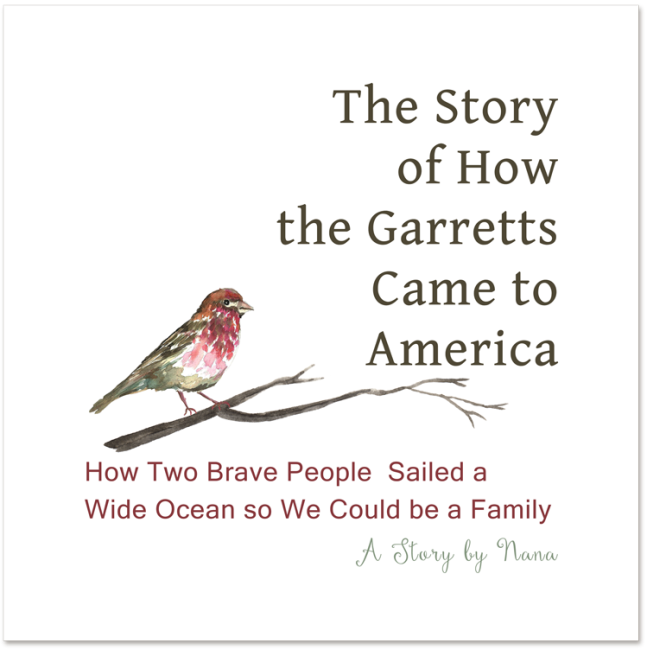
In it, I wrote how William and Isabella married, immigrated to the United States, and finally settled in Illinois. I’d like to tell their story now, but for adult readers.
William John Garrett was born in Douglas, IOM, to his parents, William Garrett, a mason, and Catherine Craine. He was baptized in St. George’s Chapel April 30 by John Christian, Chaplin.
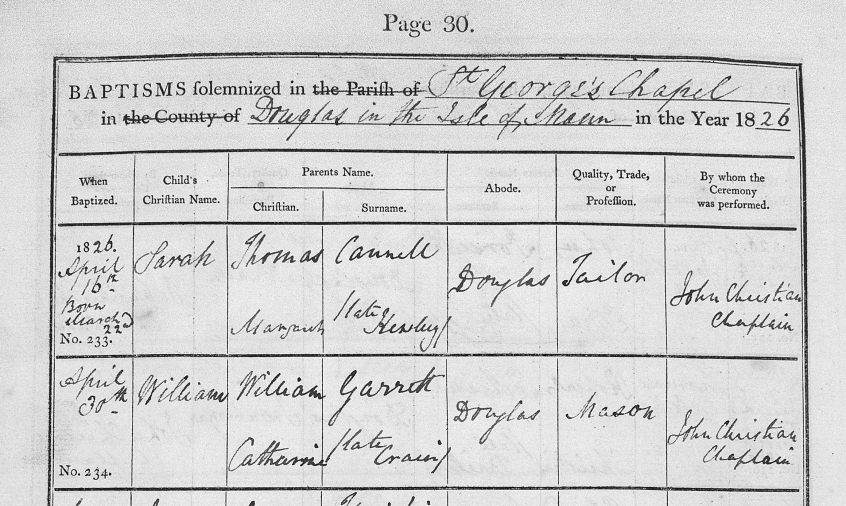
Isabella was baptised at Kirk Braddan, IOM, April 27, 1833. Her parents were Edward Kissack and Margaret Cubbon.
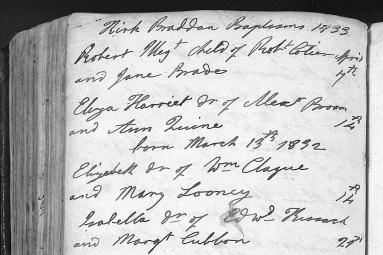
Isabella was the youngest daughter of six: Mary Ann, Margaret, Elizabeth, Eliza, and Catherine. Her father was a gardener, and the family lived at 6 Queen’s Place, Douglas.
John had at least one sister, also named Isabella, who had married a man named Edward Graves. (This is an important fact, as you will see shortly.)
John and Isabella were married September 11, 1852 in the parish church of Kirk Braddon. According to the register, William was of full age, a bachelor, a joiner (carpenter), and he lived in Heywood Place, Douglas. Isabella was a minor, a spinster (an unmarried woman of any age, not necessarily older, and possibly a spinner by trade), and she lived at Caley’s Place, Douglas (a boarding house). Both William and Isabella signed the marriage register, meaning that both could read and write. For a young woman at this time, especially, this was unusual. No occupation is listed here for Isabella, but in the 1851 census, she is working in a factory.

Less than a year later, June 2, 1853, William and Isabella executed a rather long and complicated legal document in preparation for their move to America. As best as this legal amateur can discern, it involves a bond and security for thirty pounds that William’s sister, Isabella, directed that a Mr. John Clucas give to William to take with him to New York, where Isabella and her husband, Edward, were living.
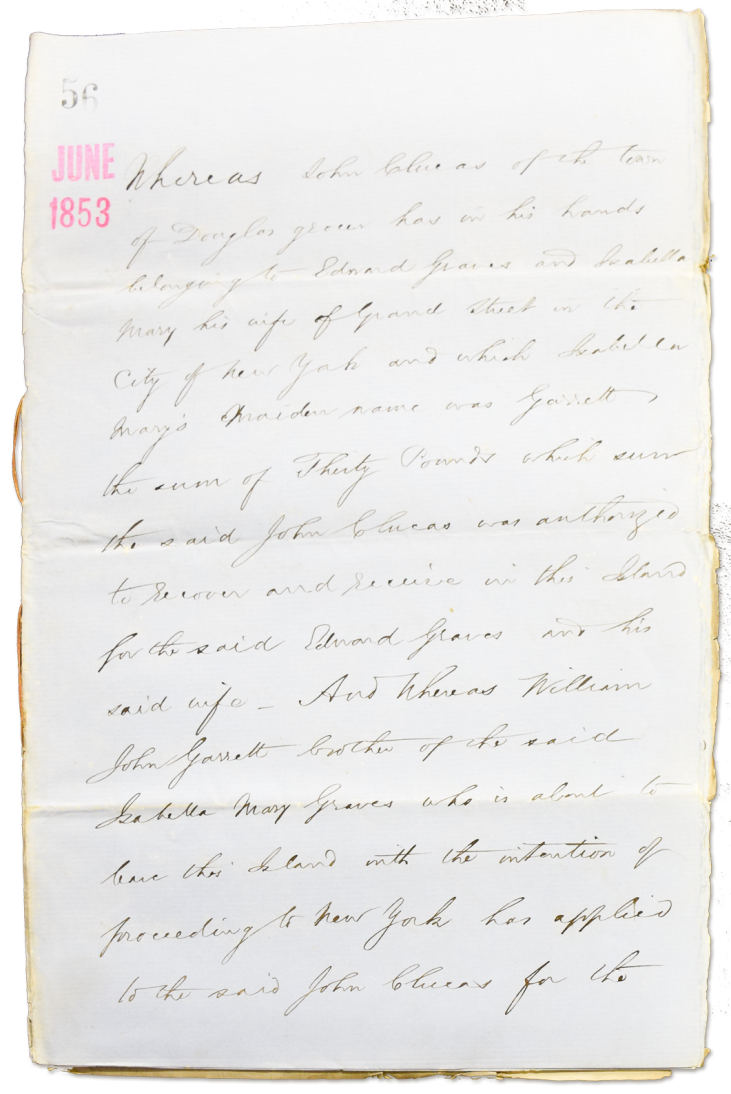
Apparently, Mr. Clucas didn’t trust that Isabella’s letter was legitimate. He requested and received a bond for forty pounds from William to absolve him of all responsibility if indeed William was pulling one over on him. It appears, again to this amateur, that William and Isabella deeded their moiety (half share in a house) in Heywood Place to Mr. Clucas as part of this arrangement.
In January 1858, the bond was cancelled upon receipt from America that the thirty pounds made it to Isabella and Edward.
I think. Anybody a lawyer?
Well, enough of that. What’s important is that there was a lot of information to be found in the midst of all that legalese.
- William and Isabella were about to leave the Isle of Man in early June 1853.
- Isabella participated in the legal proceedings with William. She also signed the document.
- William’s sister and her husband, Edward Graves, had already immigrated and were living in New York city.
- William and Isabella’s destination was also New York.
I haven’t found a passenger list yet for them, but I’m going to guess that they sailed directly to New York, rather than one of the other ports in North America, such as Boston or Philadelphia. If so, they would have arrived at Castle Garden, as Ellis Island wouldn’t be built for years.

Not having a passenger list, I don’t know exactly when William and Isabella arrived. I do know that it was before August 9, 1853. Their first son, also named William John Garrett, was born that day in New York.
Isabella had left her homeland, friends, and family so far away. And, while heavily pregnant, she had sailed across an huge ocean on a constantly moving, rocking, and wave-tossed ship. I can’t imagine how uncomfortable she must have been. In my head, she is a very brave, stalwart woman.
By 1873, Isabella and William had settled in Joliet, Ilinois. They had 12 children in all, eight boys and four girls.
- William John, 1853-1855
- George, 1855-1857
- Albert Eugene, 1858-1937
- Arthur Henry, 1860-1922
- Edward Osborne, 1862-1914
- Gilbert Charles, 1864-1944
- Lillian, 1866-1954
- Louis Frank, 1869-1886
- Richard Walter, 1871-1886
- Emma Eliza, 1873-1899
- Kathryn Eva, 1876-1946
- Mabel Laura, 1879-1948
William passed away in 1900; Isabella lived another ten years without him. I don’t have any photos of them, but I sure wish I did. I want to see the faces of these strong, brave people.

‘Til next time.


